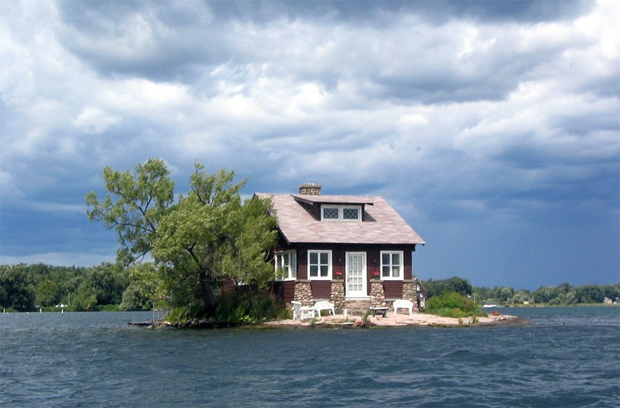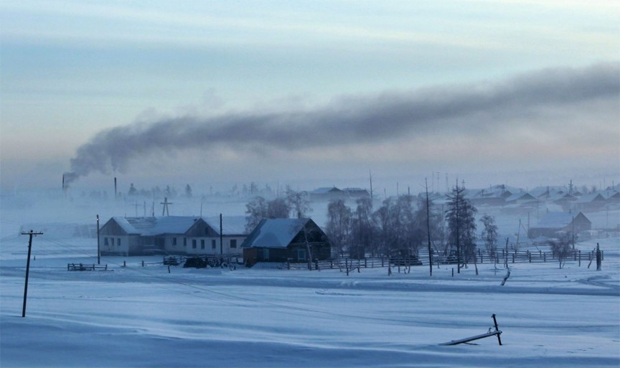|
The Earth is our home, the place that nourishes us
and shelters us from the cradle to the grave, so we kind of expect it to
be a uniform habitable place for all of us. But then, there are those
who do continue their existence to endure in the throes of the modern
world and choose to do so in the most bizarre and non-conforming ways,
whether it be through mind boggling architecture, making the most of
limited space or living in a weird location. Here is a list gathered
together of a bunch of peculiar dwellings and harsh habitats humanity
has taken itself up in.
|
|
Island House on St. Lawrence River
Nestled between the border of the USA and Canada, two of the largest
countries on Earth, is a house built on a plot so small that there is
just enough room to contain the house. Filling an island on the St.
Lawrence River dividing the State of New York and the Canadian Province
of Ontario is a house that may as well be boating leisurely along the
river. |
|
 |
|
The Cold Pole
The city of Verkhoyansk is situated over 3,000 miles away from the
Russian capital Moscow, and deep within the Taiga Forest, which is the
world’s largest. The Siberian city also claims to be the “coldest city
in the world,” therefore referred to as “The Cold Pole.” |
|

|
|
Coming Out the Closet
A 57-year-old Japanese man noticed that his food had begun to disappear.
Puzzled, he set up a camera to observe any strange happenings, only to
find that an intruder was in his apartment, a trespasser police
discovered to be 58-year-old Tatsuko Horikawa. The woman had been living
in an upper compartment of a storage closet in the man’s apartment! She
had even stored a futon in there and took showers when the man was out,
for a year! |
|

|
|
Greenland
The very name Greenland is ironic, as vegetation is as rare as people on
the large island (the world’s second largest island). The 57,000 people
who inhabit the island must be a very hardy folk indeed; sharing an
island with polar bears and biting chill can’t be easy, after all. |
|
 |
|
Sistan Basin, Afghanistan
As dry as the freezing ice of Greenland is, there are plenty of hot
counterparts throughout the planet. One of these is the Sistan Basin in
the Asian country of Afghanistan. Once a fertile place, home to wildlife
and a haven of agriculture, the area began to dry up in the 1990s
through relentless irrigation and drought. Years of war in the nation
has failed to return the area to what it was once was, so now the basin,
on the nation’s southern border, has become one of the Earth’s driest
spots, despite UN attempts to repair the damage.
|
|
 |
|
Changthang Region, Tibetan Plateau
The average height of this region is around 16,400 feet! The steppe is
home to birds, Tibetan gazelle and wild sheep and the nomadic Changpa
people. One must possess a very brave altitude – sorry, attitude – to
live in such a place and a head for heights must be born and bred into
these people – no vertigo when you practically live on a mountainside.
|
|
 |
|
The Maldives
These lush tropical islands seem like paradise and they are, on the
surface and that is the problem, how long they will remain on the
surface? With only a maximum elevation of 6 feet above sea level, the
archipelago in the Indian Ocean is at the mercy of rising waters. So
much so that it is estimated it will soon be under water. The house on
the St. Lawrence River is one thing, but one third was left homeless in
when the 2004 Boxing Day Tsunami struck the islands. The capital island
city of Male submerged by the King Tides of 1987. So when the last
President was sworn in, he became the first to draw up an evacuation
plan for the islands and their 300,000 citizens should The Maldives go
under.
|
|
 |
|
House in Nas Montanhas de Fafe, Portugal
Built in 1974, the house is without power (even though a wind turbine is
next door!) This house has grown into a regular tourist attraction,
though some of the visits to the dwelling have turned sour, with several
break ins, resulting in bulletproof windows and a steel door bolstering
this “rock solid” house. |
|
 |